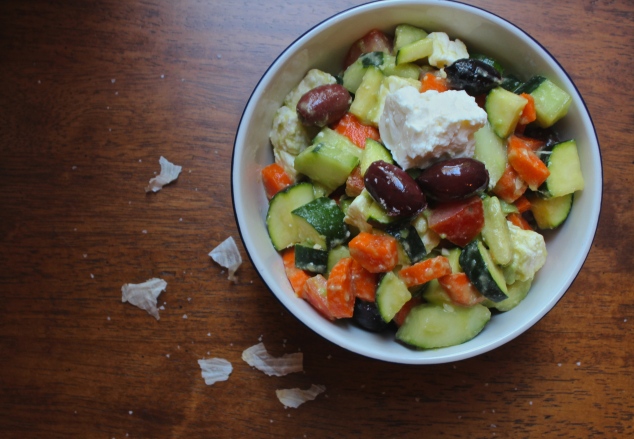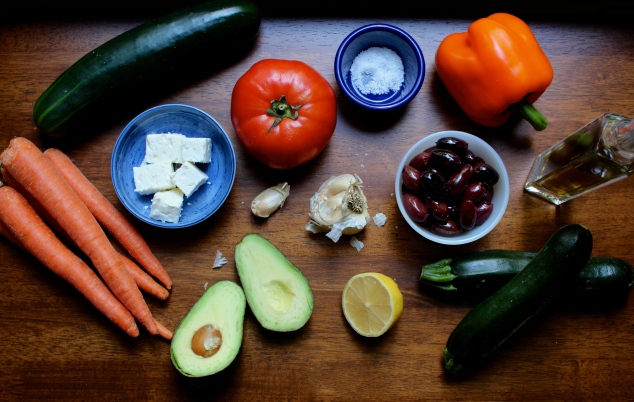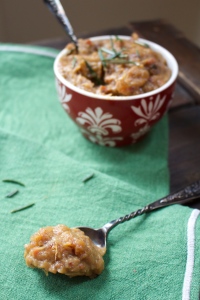It’s time to finalize the Christmas menu! Add some extra festive flare to your party with these colorful bites. Allergen friendly hor d’oeuvres can be hard to come by. My pre-paleo staples were hummus, cheese & crackers and flatbread pizzas, which are far outside my current diet. These little steak bites are a great crowd pleaser and free of most common allergens.
Flank steak is easy to marinade and one of the more inexpensive cuts of beef. Be careful not to overcook it. The meat will become too chewy to enjoy. For extra spice flavor, let the steak marinate overnight.



Makes 2 dozen steak bites.
Steak Marinade
1 lb flank steak
1/3 cup extra-virgin olive oil
2 tbsp lemon juice
1 tbsp garlic – minced
1 tsp salt
1 tsp pepper
1 teaspoon dried oregano
1/2 teaspoon paprika
Vegetables
2 red bell peppers – sliced
2 green bell peppers – sliced
1 yellow onion – sliced
1 tbsp coconut oil
1 tsp salt
►Whisk together all marinade ingredients. Place steak in a baking dish and coat thoroughly on all sides. Cover and marinate for two hours in the fridge.
►Preheat oven to 375 degrees. Coat baking pan with coconut oil. Toss onion and peppers with salt and spread out into pan. Cook for 15 minutes.
►Remove steak from marinade and discard. Heat a large cast iron frying pan on high heat. Melt 1 tbsp coconut oil. Place steak in pan. Let sear 2-3 minutes, until browned. Then using tongs, flip steak and sear on other side for 2-3 minutes.
►Turn off the heat and move your pan to another cool burner. Let the steak sit in the pan for 5-10 minutes so it can continue to cook a bit.
(120°F for very rare, 125°F for rare, or 130°F for medium rare. Flank steak is best rare to medium rare.)
►Remove steak to a cutting board and allow to rest for 10 minutes before cutting. Leave the juices in the pan.
►Slice the steak very thin, against the grain so you cut through the tough long muscle fibers. This prevents the meat from being chewy.
►Go back to the pan and scrap up all the browned bits. Throw in 2 tbsp of water and heat over high heat. Stir together until juices thicken a bit, about 3 minutes. Use this as sauce for the steak.
To assemble the bites.
►Take1 slice of each pepper and onion, then spiral the steak around them. Repeat this until all steak strips are used. You can use toothpicks to secure them. Serve plain or drizzled with the steak sauce.










